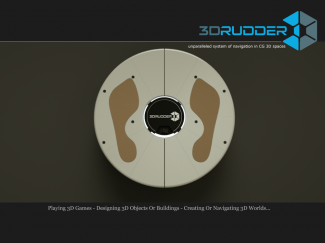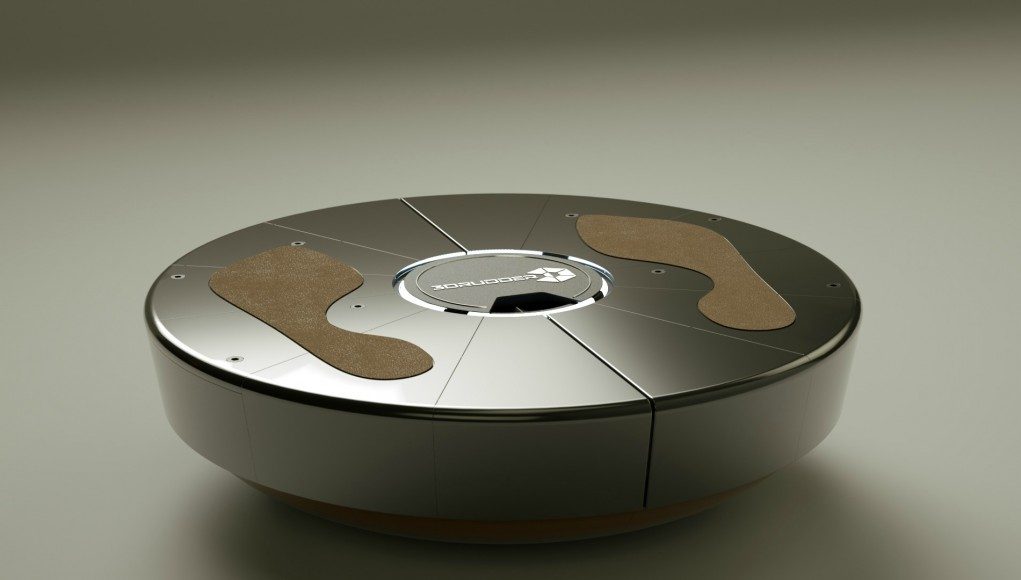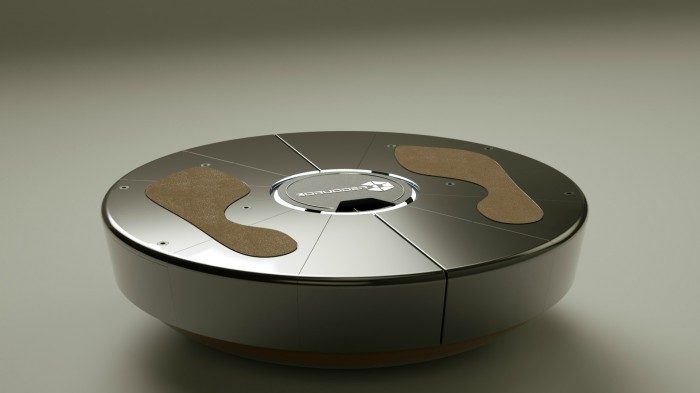A new PC peripheral company based in France is launching a feet-controlled 3D navigation and motion control device that wants to get the lower half of your body in the game, freeing up your hands for the more important things in virtual life, like hand tracking and eating nachos without getting the keyboard dirty (not necessarily in that order).
3DRudder will launch its Indiegogo campaign on December 9th, and will also be demoing the device at the upcoming CES 2015 in Las Vegas this January, which is meant to show its capability to not only serve the unique purposes of VR enthusiasts, but also traditional PC gamers and design professionals. And although it’s intended to be used while seated, the fairly compact USB device introduces a novel way of navigating 3D environments that could help bridge the divide between passive gaming and the ultimate ideal of full-body tracking in VR.
The 3DRudder is meant to entirely replace the mouse/joystick/WASD paradigm, and utilizes its flat top and rounded ‘weeble wobble’ base so the user can position their weight in any direction, allowing for 3D navigation through a virtual environment. Walking is as simple as lightly tilting the weight of both feet in the intended direction of travel: forward for forward and right for right etc.—to run, you just shift your weight a little more. Turning (yawing) is equally as simple, requiring the user to pivot the device, which we’re hoping doesn’t lead to any uncomfortable positions considering many of us sit in wheely office chairs that could negatively impact its usability.
The device also boasts several other degrees of freedom including up/down elevation and pitch (nosing up or down) and is probably where the ‘rudder’ part comes in.
 The device is actually made up of two independent pedal halves that give it a helicopter-like control mechanism, and after reading through a few pages of technical data, let’s just say we’ve hoping we don’t have to head to flight school to figure it out. That said, the multitude of input potentials could make this a highly flexible device for anything from walking in an FPS to controlling the ailerons in a flight sim.
The device is actually made up of two independent pedal halves that give it a helicopter-like control mechanism, and after reading through a few pages of technical data, let’s just say we’ve hoping we don’t have to head to flight school to figure it out. That said, the multitude of input potentials could make this a highly flexible device for anything from walking in an FPS to controlling the ailerons in a flight sim.
The Specs
 The device houses an internal sensor array of accelerometers, gyros, magnetometer, and a collection of embedded force sensors that, according to 3DRudder CEO Stanislas Chesnais, will make the 3DRudder “extremely reactive with very low latency between the user’s movements and corresponding software reaction.”
The device houses an internal sensor array of accelerometers, gyros, magnetometer, and a collection of embedded force sensors that, according to 3DRudder CEO Stanislas Chesnais, will make the 3DRudder “extremely reactive with very low latency between the user’s movements and corresponding software reaction.”
The motion control device will also be shipping with its own SDK for the benefit of any potential developers.
Power is handled by a single USB cable, which eliminates the need to fiddle about with batteries and Bluetooth dongles. This also unfortunately limits the ability for the device to play with any future iteration of mobile VR like the Samsung’s soon-to-come Gear VR, making the 3DRudder exclusive to the ‘tethered’ experience. Of course we’re not saying we want to plop down a foot-based controller on the subway and blast some baddies in Ashar Wars, but it would still be nice to see some cross-platform integration.
Although we haven’t had a chance to test the device and verify its quality, we’ll be keeping our eye out for 3DRudder at CES 2015 to see how it fares under the stinky feet of 160,000 attendees.








